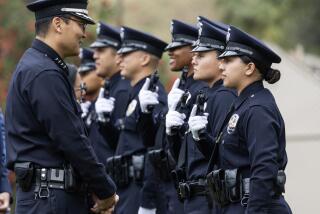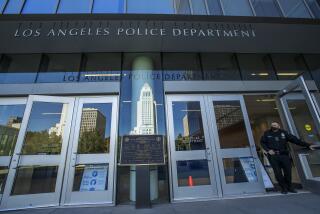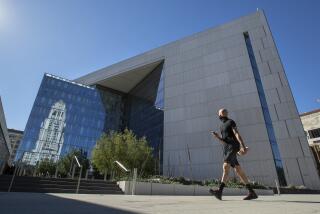Editorial: 45 days is too long for the LAPD to wait to release police videos to the public
- Share via
A proposal to publicly release video of Los Angeles police shootings and other serious uses of force within 45 days is still too restrictive — but it represents a welcome departure from the existing practice of never releasing their video.
The Police Commission is expected to decide in early March whether to adopt the proposal. Members ought to keep in mind that video recordings are public records that should be released promptly, subject to legitimate safety and investigatory needs that can be addressed within a few days. The Las Vegas Metropolitan Police Department, for example, releases such video within five to 10 days. In Salt Lake City, it is 10 business days. By contrast, the month and a half proposed for Los Angeles is an awfully long time for the department to sit on images that the public has every right to see.
Police departments across the country have embraced video recordings amid a growing public outcry against police shootings. To date, however, the LAPD has not publicly released any images of “critical incidents” captured by the thousands of body cameras worn by officers and dashboard cameras mounted in patrol cars.
Earlier this year, The Times obtained and posted video of the fatal 2015 police shooting of Charly “Africa” Keunang on skid row after it was introduced as evidence in a lawsuit. The LAPD in 2016 swiftly released video of Carnell Snell Jr. in the moments leading up to his fatal shooting by an officer, but no images of the actual shooting were included. And the video that was released came from a private surveillance camera, not from police equipment.
Chief Charlie Beck and other police officials have expressed concern about the public viewing video out of context and jumping to conclusions about what the images depict. The proposed policy calls for simultaneous release of information based on other evidence in order to give a clearer picture of just what happened.
And that’s fine. Context is certainly helpful.
But it’s not the job of the police to manage the public’s response to police incidents by determining what information to release or withhold along with the video. It’s hard to shake the feeling that the purpose of the 45-day waiting period is to assemble a narrative for public consumption. The department has suffered a loss of public trust by refusing to release video up to now, and this policy would help restore some of it. But the LAPD could do much better with a much shorter lag time.
Of course there will be instances in which video must be withheld for a few days or longer to protect officers, witnesses or even the accused, and the proposed policy provides that flexibility. But the reasons for any such decision should be publicly explained, to help prevent the exceptions from swallowing up what ought to be the rule: prompt release of critical incident video.
Follow the Opinion section on Twitter @latimesopinion and Facebook
More to Read
A cure for the common opinion
Get thought-provoking perspectives with our weekly newsletter.
You may occasionally receive promotional content from the Los Angeles Times.










